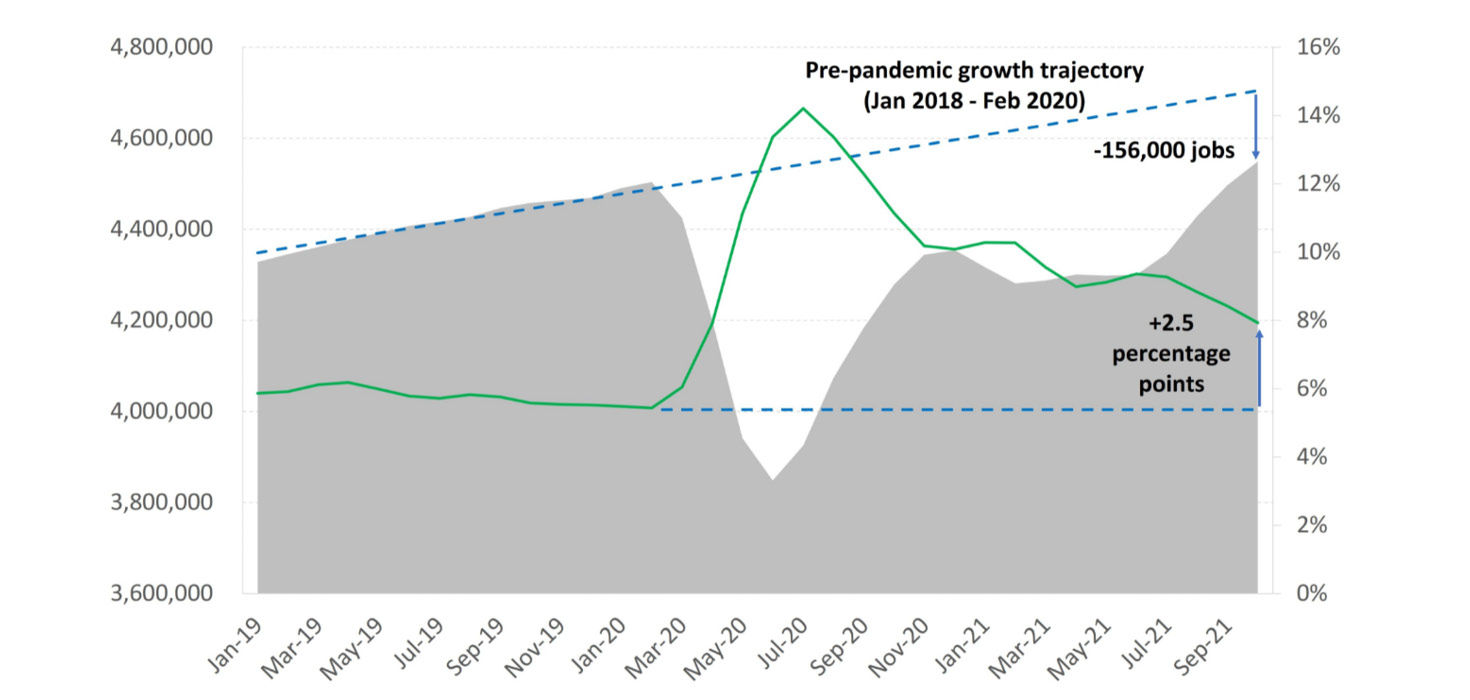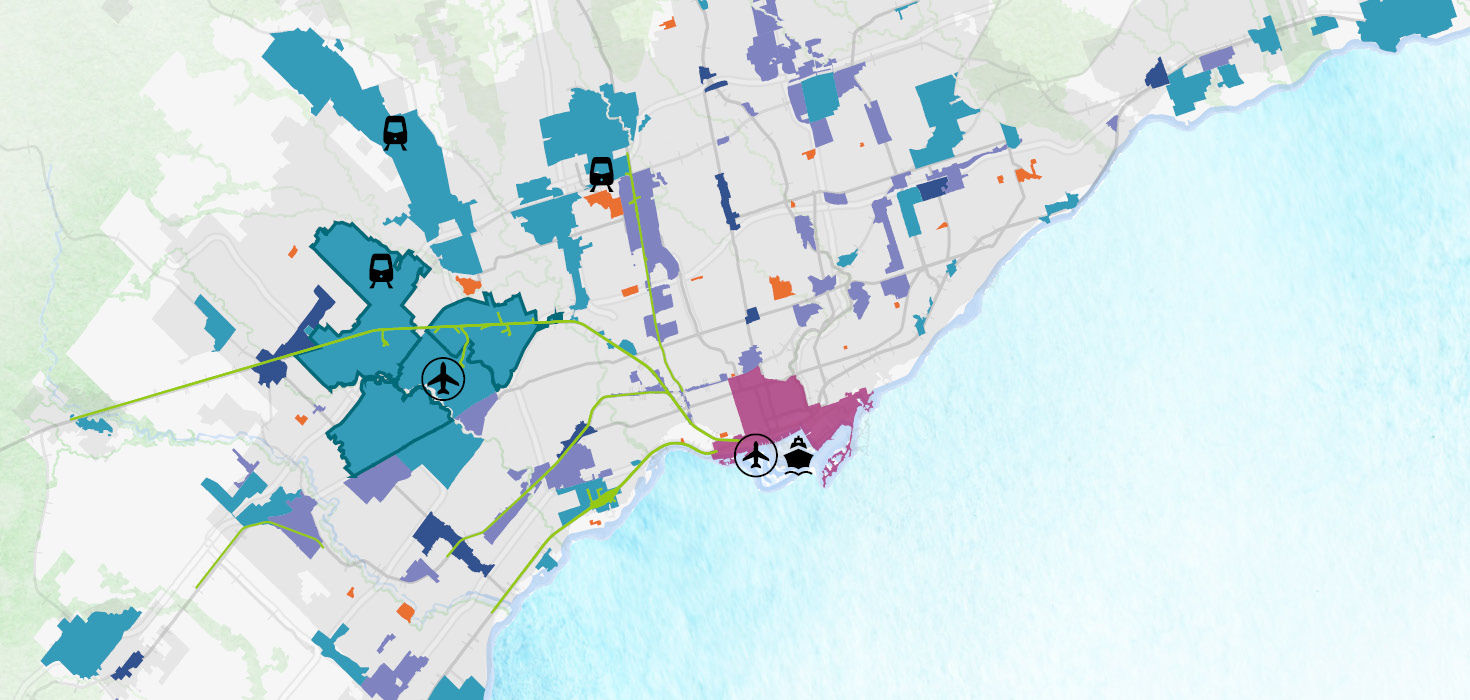October 1st, 2021 – New data released today by the Toronto Region Board of Trade points to an uneven economic recovery across different employment areas – or Business Districts – in the broader Toronto region, with the Metropolitan Centre – or downtown Toronto – experiencing one of the slowest.
These insights come via the launch of the Board’s Recovery Tracker, a new web-based tool developed by the Board’s data-driven Economic Blueprint Institute. It will provide insights into how the Innovation Corridor – a high growth economic zone comprised of the five Census Metropolitan Areas (CMAs) of Oshawa, Toronto, Hamilton, Guelph and Kitchener-Cambridge-Waterloo – has been economically impacted by COVID-19, the impacts on different districts within the region and how they are recovering.
“The Recovery Tracker is meant to provide businesses, policy leaders and other interested parties with the knowledge and trends that will help inform future strategic and investment decisions,” states Jan De Silva, President and CEO of the Toronto Region Board of Trade. “As we continue our economic recovery and begin to look towards a return to office – once the timing is right – it is going to become increasingly important to better understand how different types of businesses have been impacted by COVID-19, and what their recovery will look like. That is what the Tracker aims to inform.”
The Recovery Tracker will be updated monthly, providing businesses, policy leaders and other interested parties with information and trends that will help inform future strategic and investment decisions.
“While our region was a key driver of growth in Canada prior to COVID-19, the data shows it is still struggling with the lingering economic impacts of the pandemic” says Marcy Burchfield, Vice President of the Economic Blueprint Institute. “Despite partial recovery, there are close to 250,000 fewer people employed in the Corridor than would have been in the absence of the pandemic.”
Recovery Tracker data also shows that economic recovery has been uneven across the region. The starkest example can be seen by comparing downtown Toronto with employment areas defined by activities related to the production and movement of goods such as manufacturing, warehousing and logistics.
The Toronto Region Board of Trade is one of the largest and most influential business chambers in North America and is a catalyst for the region’s economic agenda. We pursue policy change to drive the growth and competitiveness of the Toronto region and facilitate market opportunities with programs, partnerships and connections to help our members succeed – domestically and internationally.
Media Contact
Andrew Perez, Media Relations Manager
647-290-2171
media@bot.com

